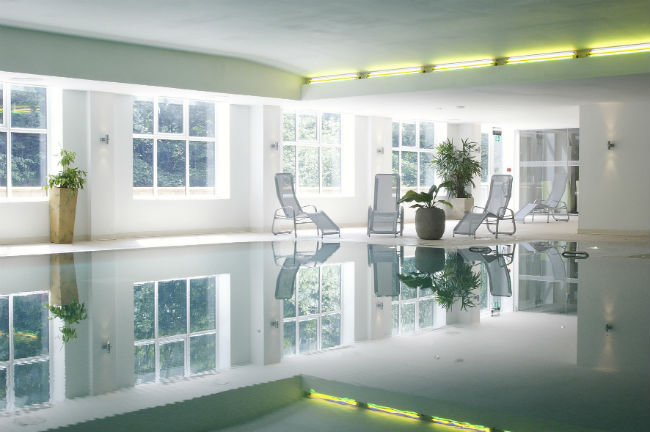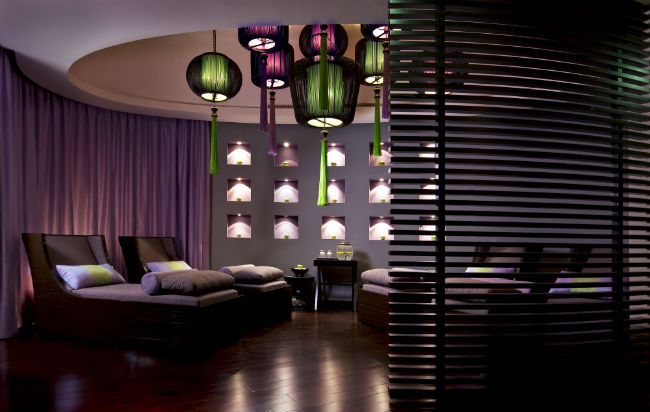Reward and Retain
While other industries roll out loyalty programmes, the spa sector has proved reluctant to take up the rewards call. Professional Spa & Wellness examines why and looks at how spas can test the loyalty waters
WORDS NORA ELIAS
The airline industry pioneered them, with its popular frequent flyer programmes. The retail sector has long since made the loyalty card a staple wallet ingredient and cafés have been handing out stamp cards for years. The global spa industry has, however, been slow to follow suit. While membership schemes are not unheard of, they remain far less common than in its sister health club industry and the majority of spas still don’t have an actual loyalty programme in place. With a seemingly direct link between customer rewards and retention, the ultimate aim of most spas, this seems curious.
“The bread and butter of your business is customer retention, so I’m surprised that not more spas have loyalty programmes,” says Salina Handa, founder and managing director of day spa group SensAsia Urban Spa in Dubai. Since introducing the Very Pampered Person loyalty programme five years ago, Handa says SensAsia’s retention rate has “gone from 50% to 70% in some branches,” a development she believes is largely due to the implementation of the points-based system.
The spa at Blythswood Square hotel in Glasgow has both a membership option and a loyalty programme – the latter launching as recently as August this year and allowing guests to redeem points across the hotel. Spa director Leon Trayling describes the introduction of the spa membership as: “A no-brainer really. From the outset it creates a group of loyal customer that we can market to and do offers for – particularly during our quieter times.”
For Handa, one of the chief advantages of a loyalty scheme is that it allows spas to reward customers for their support without necessitating a move into perpetual discounting. “With a loyalty programme, you’re still asking customers to pay full price, while at the same time making them feel special, like they’re getting something back,” she says.
The expectation trap
One reason many spas are nevertheless reluctant to formalise loyalty in the shape of an official programme is concern about creating rewards expectancy. “The key is the surprise element,” says Lynne McNees, president of the International Spa Association. “You don’t want the consumer to expect rewards because it means more when they don’t. The surprise element is a lot more powerful.”
This view is reinforced by Anna Bjurstam, owner and chief executive of Swedish spa consultancy Raison d’Etre. “It’s great to reward return guests with little surprises like special deals, small gifts or extra time on their treatments but you can shoot yourself in the foot with that, in that it then becomes something they expect every time they come in,” she says.

Tried and tested
Justin Musgrove, commercial director of The Bannatyne Group, which operates a string of spas and health clubs across the UK, argues that in spite of the more limited resources at their disposal, smaller owner-operated spas are more likely to have some form of rewards system.
“A sole trader operating their own spa is far more likely to have a loyalty programme than big groups like ourselves,” he says. “Single-site owner/operators not only have the control to personally make that decision, they’re also very close to the day-to-day running of things. They’re managing their own accounts, they’re very close to operations and they have their finger on the pulse.”
The Bannatyne Group did try a loyalty programme at its Inverness spa in 2009 but was, Musgrove says, “very disappointed with the results.” Chosen as a test site due to its already high member usage, a characteristic that should have made it an ideal location for a loyalty pilot, the “very poor take-up“ meant that the Inverness scheme was subsequently discontinued and a loyalty initiative re-introduction is not something that is currently at the top of the Bannatyne agenda.
Another UK operator to have tried and ceased a loyalty programme is Huddersfield’s eco-focused Titanic Spa. “We struggled with it and it didn’t warrant carrying on with,” managing director Warrick Burton says of the 2008 points-based scheme.
Commenting on the reasons the destination spa’s loyalty programme was unsuccessful, Burton points to a possible combination of a lack of pass-through traffic and the nature of spa purchasing patterns. “A loyalty programme is difficult to get working because people buy a coffee left right and centre but they don’t necessarily purchase spa treatments in quite the same way,” he says. “Unless they’re based locally, they also don’t come through the spa [with the same regularity.]”

Retention through results
Today doing customer rewards primarily in the form of deals and offers sent out via the spa newsletter, Burton explains that Titanic is concentrating its efforts on ensuring the spa gets it key offering, the treatments, service and facilities it provides, just right. “I think the most important aspect when it comes to pulling off repeat business is to give customers an amazing experience, to wow them and exceed the expectations,” he says.
This is a view in which he is far from alone in the industry. “Our concept of loyalty is that it begins with your core offering. If you don’t get the basics right, you will never be able to create a strong and loyal customer base,” says Paddy Halfhide, marketing director at the Nirvana Spa in Wokingham.
Of a similar opinion, Musgrove says that “invariably, managers in the spa industry have risen up through the ranks, which is often the best way since it means they know how the business operates at grass roots level, but it also means that they don’t always have the necessary business acumen.”


- Keep it simple
- Plan your customer loyalty scheme a year ahead to ensure great execution and timing
- Tier your customer spends into different levels and reward appropriately, setting a percentage you are prepared to give back
- Analyse your business in terms of repeat treatments and retail purchases

